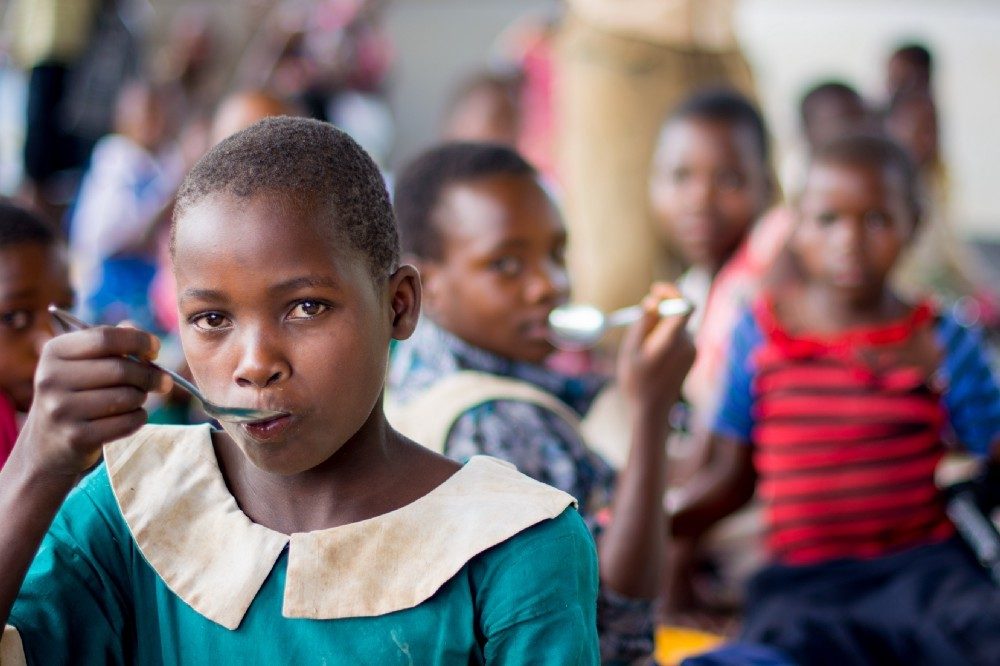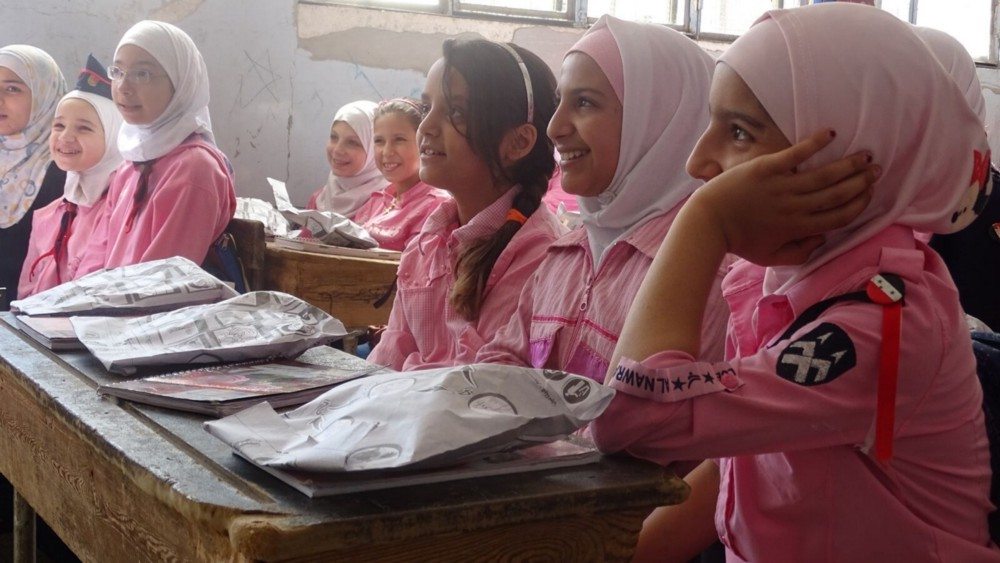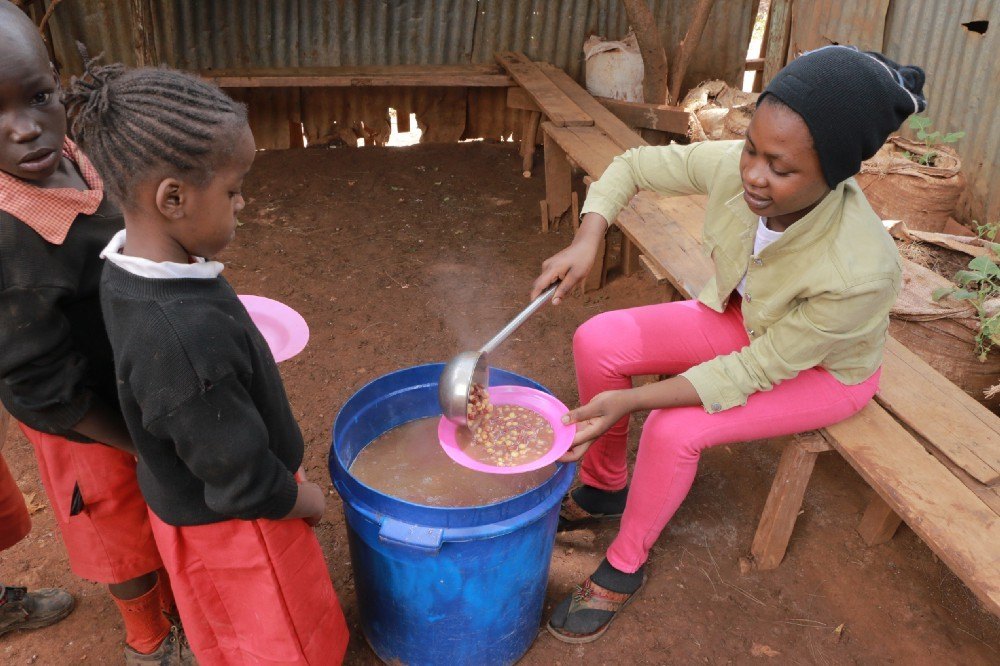Feeding a Nation’s Future: The Transformative Power of School Feeding Programs

High on the agenda at the forthcoming World Economic Forum is how enhancing human capital — that is, the sum of a population’s health, skills, knowledge and experience — is key to economic development and social progress. Children form the future human capital of a nation, and school feeding programs provide a key support in building the foundations.
For the first time ever, nearly half the world’s schoolchildren in low/middle-income countries will sit down today to eat a meal at school. That’s almost 370 million children — more than the entire population of the USA — and in all these countries half of the children fed are girls.
India now feeds more than 100 million children; Brazil 48 million; China 44 million; South Africa and Nigeria each more than 9 million. These meals are provided not once but every day of the school year.
Why have so many countries made such a huge investment? Because school feeding goes far beyond the plate of food.
The last ten years have seen a growing global consensus that school feeding programs generate lasting impact that can shape the future of a nation. A landmark World Bank publication, developed with WFP — ‘Re-imagining School Feeding: A High-Return Investment in Human Capital and Local Economies’ (Oct. 2018) — gives compelling evidence of the multiple benefits of investing in school feeding programs. They generate high returns in four critical areas: increasing human capital; providing safety nets for poor children and their families; enhancing local economies, especially the earning power of women; and supporting peace-building, community resilience and preventing future conflict. This is echoed in this year’s theme at Davos, Globalisation 4.0, which focuses on building the future in a constructive, collaborative way in the context of unprecedented uncertainty, fragility and controversy.
Yet despite this significant progress, millions of children in the poorest countries still don’t have access to school feeding.
The World Bank estimates that 70% of the wealth of rich countries results from the productivity of their people — their human capital. In poorer countries, this is only 40% — meaning that these nations are missing out on the potential productivity of their populations. Their people are not getting the chance to fulfil their potential. They are losing human capital.
A prime reason is that, while these countries invest in total some US$ 210 billion annually in their childrens’ education, they only invest about US$ 4 billion in their health and nutrition. But sick children can’t attend school, and hungry children can’t learn. We need to match the investment in teachers and schools with investment in the students themselves. Indeed, investing in school feeding programs significantly leverages the investment in education.
The impact would be especially great for girls. Feeding girls throughout childhood and adolescence nourishes their bodies and their minds. School feeding provides a strong incentive to families to send — and keep sending — girls to school. Helping girls stay in school, especially into adolescence, is an effective way of preventing early marriage and of delaying first pregnancy, both of which can trap women into poverty and chronic ill health. A recent World Bank report, launched in partnership with the Malala Fund, shows that if all girls completed secondary school, women and girls could add up to US$ 30 trillion to the global economy.
One of the smartest ways low/middle-income countries responded to the 2008 financial crisis was by expanding their national school feeding programs. Why? Because it reaches into the heart of poor communities and benefits children directly. The food provided is seen by families as having real value, often substituting for around 10% of the family income for every child fed throughout the year.

WFP/Zuha Akkash
For children living in fragile or conflict-affected states, school feeding provides a sense of normality in traumatic circumstances. For communities affected by shocks, it can represent the hope for a more peaceful future with stronger social cohesion.
These programs demand large-scale and regular supplies of food — an opportunity to boost local economies. The Nigeria Homegrown School Feeding Program, for example, requires 6.8 million eggs, 70 tons of farmed fish and commensurate amounts of pulses and vegetables every week. In Syria, all the snacks distributed in schools as part of the program are produced locally.
Linking local production to local consumption creates a stable and predictable market for local farmers, especially smallholders, some 70% of whom are women and often the mothers of the children who are being fed. This creates business opportunities for women.
In Nigeria, some 95,000 women who previously relied on precarious local markets for income can now count on steady incomes as caterers for the school feeding program.
In low-income countries, these programs have developed over the last 10 years into one of the fastest-growing areas of investment by national governments.

WFP/Martin Karimi
But the investment is not growing fast enough for the most vulnerable children in the worst affected countries. WFP estimates that some 73 million children there are not being reached, and it requires an annual investment of US$ 4.6 billion in national government-led school feeding programs to meet the need — funding that would be covered through national budgets, donor grants, innovative financing facilities and the private sector.
Children in school today will be adults in 2030. We have a window of opportunity to help them fulfill their potential and to leave a global legacy in harmony with the SDG principle of ‘leaving no one behind’.
But we need to act now.
We need to invest in the well-being of our children, especially the most vulnerable, both now and for the next generation. Only through the commitment of global leaders to programs such as School Feeding will these children be able to reach their full potential and the world gain the massive fund of human capital they represent.
Originally published on wfp.org by Carmen Burbano de Lara.




